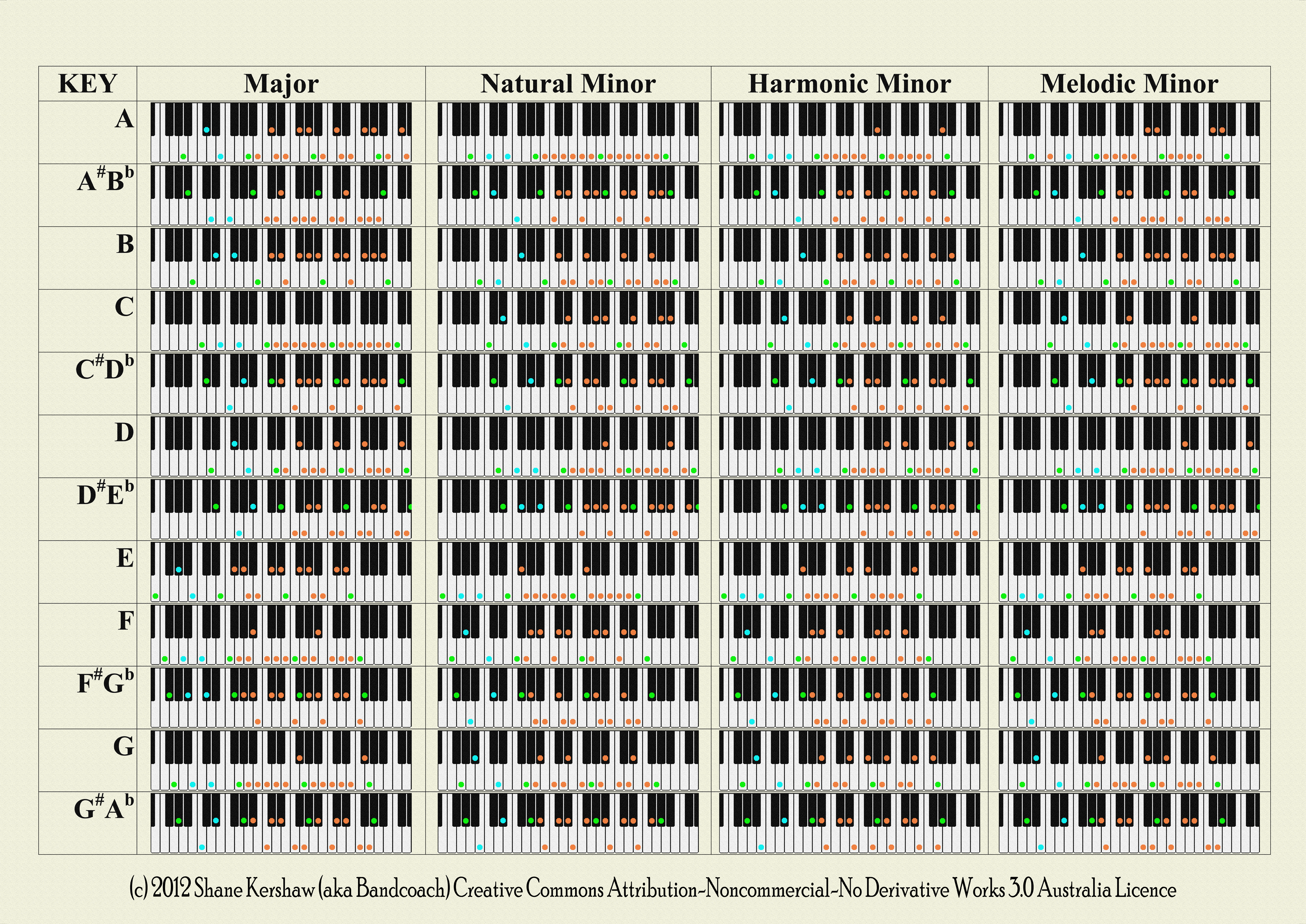

Name the i, III, VI and VII chords of the following keys. This example suggests very strongly that the actual aural difference between major and minor in pop music is often quite small. The change is audible, but it involves a very subtle change of inflection. Nonetheless, there is a sort of pivot from F# minor to A major. I once played this example for my students, and they had a hard time hearing any difference of key at all. Because these two keys feature the same chords, is isn’t obvious that the key has changed - and, in fact, maybe we should not think of it as a key change. But in the third line, Springsteen pivots to a I-IV-vi-V progression in A major. The first two lines feature a i-VI-III-VII progression in F# minor. An example occurs in the chorus of Bruce Springsteen’s “Radio Nowhere.” The similarity between major and minor keys also means that songs can move almost seamlessly between major and relative minor, and vice versa. These songs are in minor keys, but they almost feel like they’re in major. Scholars have demonstrated that the use of minor keys in pop music has increased in the last several decades because listeners increasingly prefer music that features complex “emotional cues.” It’s interesting, then, that a number of recent hits in minor keys, such as “Replay” and Taio Cruz’s “Dynamite” (with a chorus progression of i-VII-III-VI), have unambiguously happy lyrical themes and quick tempos.

The minor key of “Replay” does, however, undercut the giddy quality of the lyrics somewhat, and perhaps listeners would have found “Replay” to be too sugary if it had been written in a major key. The i-VI-III-VII progression makes it one of many pop hits of the last few decades that prominently feature minor chord progressions but don’t feel sad, such as Avril Lavigne’s “Complicated” or MGMT’s “Kids,” both of which feature that same i-VI-III-VII progression. The song doesn’t sound sad, in part because the chords (F#m, D, A and E) are the same as the primary chords we would use in A major. The result is that many pop songs in minor keys don’t really sound melancholic in the way classical pieces in minor keys often do.įor example, here are the opening measures of Iyaz’s “Replay,” which is in F# minor.

They’re distinct from one another mainly in that minor-key progressions begin with (or perhaps heavily emphasize) a minor chord, while major-key progressions begin with a major chord. The first is that, in pop music, major and minor simply aren’t that different. There are two main answers to this question, both of them complex. If we’re listening to a song and we hear these four chords, then, how can we tell whether we’re in E minor or G major? So the four main chords used most frequently in a minor key will also be used most frequently in its relative major. These four chords are the same as the four main chords in the relative minor key of G major. So if we’re in E minor, the four main chords will be Em, G, C and D. Likewise, in pop songs in minor keys, there are often four main chords, but this time they’re i, III, VI and VII. In Chapter 3, we learned that in pop songs in major keys, there are four main chords: I, IV, V and vi. Now let’s add triads, just as we did in major. (For review of natural minor, and relative major/minor, return to the end of Chapter 1.) Note that E minor is the relative minor of G major, since both have a key signature of one sharp. To see why, let’s create a chord palette for a minor key, much as we did with G major in Chapter 3. A minor key and its relative major key can sound quite similar to one another. But in pop music, the emotional quality of minor keys is a frequently ambiguous. It has a grain of truth in pop music, too. That’s a decent shorthand to describe the way major and minor keys sound in classical music. In a music appreciation class, you might learn that major keys essentially sound happy, and minor keys sound sad. The leading tone, which is a half step below the tonic, can make the distinction between minor and major easier to hear. In pop music, the difference between a minor key and its relative major can be small, and the chords we use in minor keys frequently are closely related to those we use in major.


 0 kommentar(er)
0 kommentar(er)
